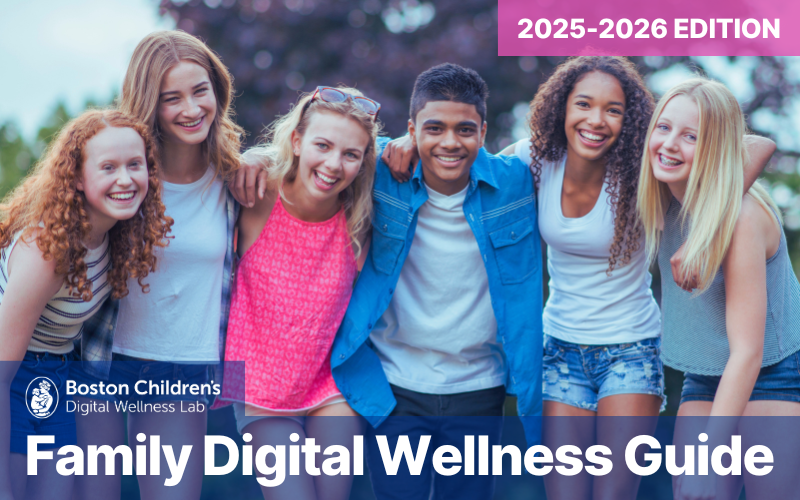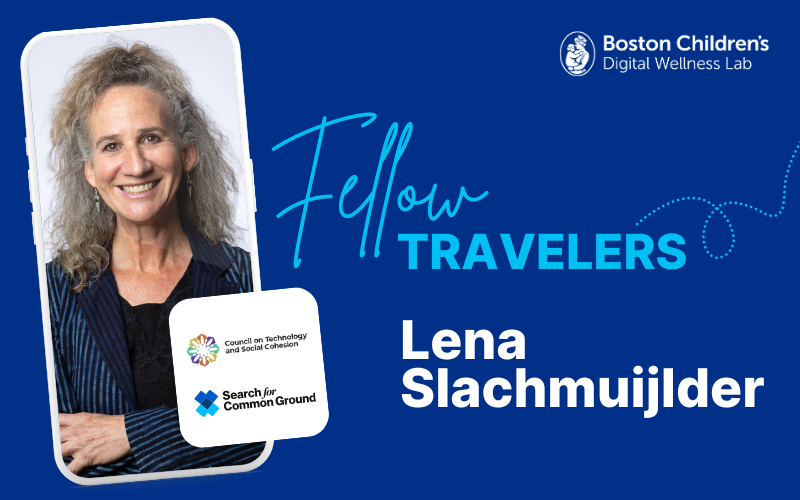Lena Slachmuijlder
Co-Chair, Council on Technology and Social Cohesion
Executive Director, Digital Peacebuilding at Search for Common Ground
What are the missions of your two organizations?
At the Council on Technology and Social Cohesion, we bring together technologists, academics, policy advocates and peacebuilders to incentivize the design and deployment of technology for social cohesion. To us, this means:
- Public Policy: Governments incentivize and support prosocial tech design.
- Funding: Financial support comes from multiple sectors.
- Metrics: Measurable standards for technologies promoting social cohesion are credible and accessible, enabling rewards for platforms bolstering social cohesion and accountability for platforms that foster polarization.
- Scientific Evolution: A comprehensive repository of use cases and methodologies demonstrate how technology can build social cohesion.
- Implementation: There are a growing number of successful projects and evidence-based methodologies exemplifying these principles, setting industry benchmarks.
At Search for Common Ground, we support and elevate the use of digital tools for conflict transformation with an aim to end violent conflict by changing the way the world deals with conflict, moving away from adversarial approaches towards collaboration.
What is your area of focus?
As Executive Director of Digital Peacebuilding at Search for Common Ground, I activate and elevate the use of digital tools for conflict transformation across Search’s programs. As the Co-Chair of the Council on Technology and Social Cohesion, I am a part of a larger team working to enable collaboration between technologists, academics, policy advocates and peacebuilders to catalyze the design and deployment of technology for social cohesion.
What led you to this work?
I’ve been working for peaceful social change for over 30 years, starting as a journalist with anti-apartheid media in South Africa after graduating from Stanford, and pioneering creative media tools for peacebuilding over the last two decades.
I believe that our inability to end violent conflict is the most consequential issue of our time. It is at the root of most of the hindrances to human development. Persistent poverty, high levels of child mortality, and lack of access to basic literacy and education often stem from war. Moreover, the trauma experienced by those involved in violent conflict leaves wounds that are passed down through generations. I want to work for a world without war, where we embrace conflict as an opportunity to understand each other and meet each other’s needs through trust and collaboration.
What have you learned in the course of doing this work about young people’s wellness while engaging with tech and interactive media?
I have learned that technology often exploits the vulnerabilities of young people, especially during adolescence. While humans have basic needs for acceptance, autonomy, and agency, social media companies design their products for maximum engagement, preying on young people’s insecurities and fragile self-esteem. Globally, many young people are unaware of how their choices shape algorithms, leading them to mind-numbing and mocking content that doesn’t help them understand the world. Although some young people have used the internet to overcome barriers and access opportunities, the overall impact often leaves adolescents at risk of losing more than they gain. My conclusion is that the use of social media is not making young people more able to deal with conflict collaboratively. Rather, it is reinforcing norms that abuse and bullying are acceptable. The permissiveness of bad behaviors online without consequences is resulting in the withdrawal of the leaders of tomorrow, particularly girls and young women. This creates a deficit of talent for our future leaders, and discourages people from gaining key leadership experiences during their formative years, which could give them the courage and confidence to lean into addressing conflict in future, preventing further violence.
How would you change or design technology and/or media to be healthier for kids across the developmental span?
Companies should work closely with communities and local leaders to ensure their products are well understood, receive feedback, and make necessary design adjustments to make tools less addictive. Promoting positive qualities such as curiosity, comfort with diverse views, and the ability to express oneself should be prioritized.
- I am particularly inspired by the Neely Center’s design code, which includes important features like preventing small groups from reaching into the private spaces of young users.
- Critically, ranking and recommending of content should be based on quality, rather than engagement. Platforms should prioritize identifying and listening to quality signals.
- Default settings should ensure new users understand and choose their visibility online.
- Platforms must take more responsibility in reminding users how to flag harmful content, protect others, and make it easier to report issues, especially content against women and girls.
What guidance or advice do you have for parents and caregivers to help kids build and maintain their wellness when engaging with digital media and technology?
There needs to be greater attention to the emotional and brain development of young people when using digital tools. The ease of addiction and falling into harmful rabbit holes is alarming, and adults often fail to notice these changes until it’s too late.
Is there anything else you’d like to share?
Here are some links that reinforce the above ideas:
- Toward Prosocial Tech Design Governance
- How we’re incentivizing tech to build social cohesion
- Ranking content on signals other than user engagement
- Tech and Social Cohesion Substack (curated by Lena Slachmuijlder)
We know that no one person, organization, or company can successfully address the challenge alone, so it’s imperative that we collaborate to design and maintain a healthier digital experience for all young people and their families. Our Fellow Travelers blog series features colleagues from around the world who focus on digital wellness from a different perspective than the Digital Wellness Lab, enabling us to share expertise in key areas of digital wellness that we don’t explore as deeply.
Here at the Lab, we welcome different viewpoints and perspectives. However, the opinions and ideas expressed here do not necessarily represent the views, research, or recommendations of the Digital Wellness Lab, Boston Children’s Hospital, or affiliates.








